The Library of Consciousness
of Consciousness
Man's Place in the Universe (1942)
A Dialogue on Metasystem Transition
Valentin Turchin explores the theory of metasystem transitions through a conversational approach, examining how new layers of control emerge when individual systems combine into a larger, integrated system. These transitions, Turchin argues, are the key moments in evolution—like stepping stones in both biological and cultural development. By viewing evolution as a series of these transformative quanta, he reflects on past evolutionary leaps and speculates on what they could reveal about the future path of universal evolution.
A Landscape of Consciousness
Diverse explanations or theories of consciousness are arrayed on a roughly physicalist-to-nonphysicalist landscape of essences and mechanisms. Categories: Materialism Theories (philosophical, neurobiological, electromagnetic field, computational and informational, homeostatic and affective, embodied and enactive, relational, representational, language, phylogenetic evolution); Non-Reductive Physicalism; Quantum Theories; Integrated Information Theory; Panpsychisms; Monisms; Dualisms; Idealisms; Anomalous and Altered States Theories; Challenge Theories. There are many subcategories, especially for Materialism Theories. Each explanation is self-described by its adherents, critique is minimal and only for clarification, and there is no attempt to adjudicate among theories. The implications of consciousness explanations or theories are assessed with respect to four questions: meaning/purpose/value (if any); AI consciousness; virtual immortality; and survival beyond death. A Landscape of Consciousness, I suggest, offers perspective.
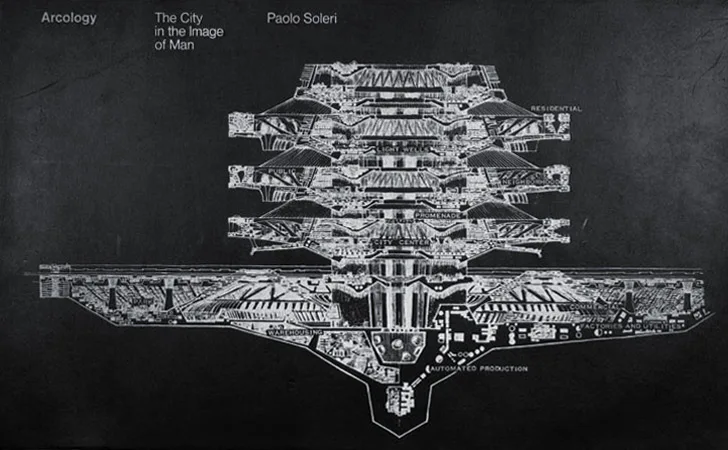
Arcology
Visionary architect Paolo Soleri challenges us to think of cities as biological entities with his concept of the arcology—a massive, self-sustaining, urban “organism of a thousand minds” designed to exist in harmony with nature. He proposes that the purpose of life is aesthetogenesis: the universe progressively complexifying itself into compassionate, beautiful structures. Soleri showcases 30 potential arcologies through incredibly detailed diagrams, explaining how each integrates itself economically and ecologically into the world and fulfills his aesthetogenic criteria. The scope of his vision ranges from cities designed to span canyons or float on the oceans to cube-shaped metropolises suspended on pillars, and even a space habitat. While comprehensive, Soleri's focus lies primarily on realizing arcologies that meet humanity's moral imperative for sustainable urban living.
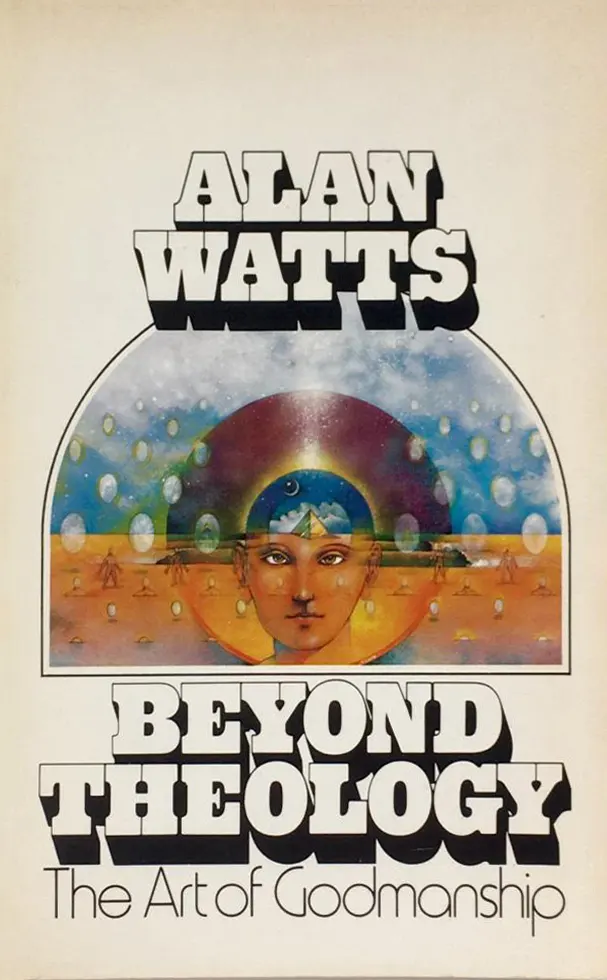
Beyond Theology
Alan Watts examines the theme that our normal sense of the person as a lonely island of consciousness is a dramatic illusion based on theological imagery. In a global context, the meaning of this imagery inevitably changes, yet without losing its unique values.
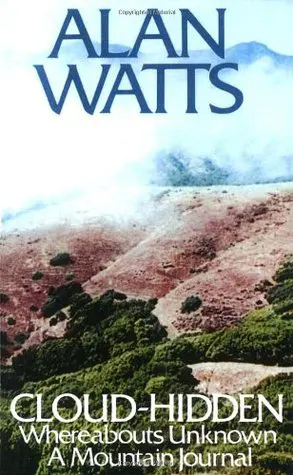
Cloud-Hidden, Whereabouts Unknown
Over the course of nineteen essays, Alan Watts ruminates on the philosophy of nature, ecology, aesthetics, religion, and metaphysics. Assembled in the form of a mountain journal, written during a retreat in the foothills of Mount Tamalpais in California, Cloud-Hidden, Whereabouts Unknown is Watts’ meditation on the art of feeling out and following the watercourse way of nature, known in Chinese as the Tao. Embracing a form of contemplative meditation that allows us to stop analyzing our experiences and start living into them, the book explores themes such as the natural world, established religion, race relations, karma and reincarnation, astrology and tantric yoga, the nature of ecstasy, and much more.
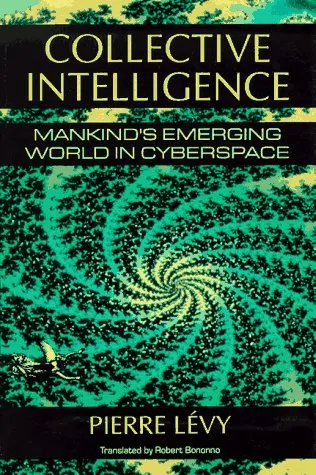
Collective Intelligence
The number of travelers along the information superhighway is increasing at a rate of ten percent a month. How will this communications revolution affect our culture and society? Though awed by their potential, we’ve feared computers as agents of the further alienation of modern man: they take away our jobs, minimize direct human contact, even shake our faith in the unique power of the human brain. Pierre Lévy believes, however, that rather than creating a society where machines rule man, the technology of cyberspace will have a humanizing influence on us, and foster the emergence of a “collective intelligence”—a meeting of minds on the Internet—that will validate the contributions of the individual.
Conceptions of a Global Brain
Imagine a giant, intelligent brain made of humanity and its computers—the Global Brain. This idea blends views of society as a living organism, a universal encyclopedia, and an emerging higher consciousness. Global networks like the Internet not only share information but also learn and adapt together. By combining insights from evolution and cybernetics, we can overcome conflicts and build a collective intelligence that makes solving world problems more efficient and creative.
Conscious Evolution
Barbara explored the ideas of Pierre Teilhard de Chardin, and the possibilty of humanity gradually giving birth to a new planetary-scale consciousness, which she called Homo universalis.
Consciousness and Rhythm
This seminar explores consciousness as an intrinsic rhythmic interplay with reality. Watts challenges notions of separateness, asserting that individuals are not detached witnesses, but instead fundamentally unified with the cosmos. He encourages transcending ego and dualistic thinking to harmonize with the underlying patterns and dance that all differentiated experiences, including our own being, arise from. The goal is realizing our inherent interconnectedness with the seamless whole.
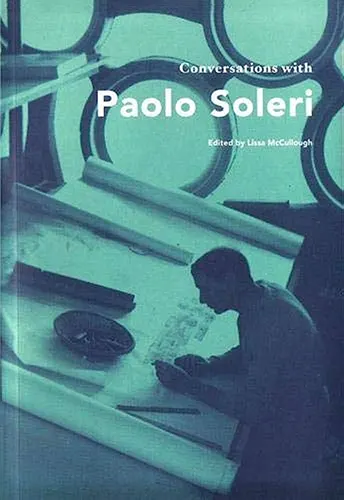
Conversations with Paolo Soleri
Paolo Soleri's architectural-philosophical thinking sets forth fundamental reformulations to address the globalizing world's most urgent environmental, urban infrastructural, and socio-ethical problems. In this book, Soleri's most recent ideas are distilled into an accessible overview for the general reader. Soleri proposes to transform our societal systems while raising sights to a radically long-term and humanistic perspective. Among the interrelated concepts outlined here are Soleri's highly original ideas of orchid and forest, the city as hyper-organism, the urban effect, and the love project. These inspiring ideas are acutely timely in light of current environmental trends: responding to global climate change, radically reducing oil dependence, embracing frugality and reduced consumption, while simultaneously confronting issues of suburban sprawl, urban renewal, smart land use, and wise food production.
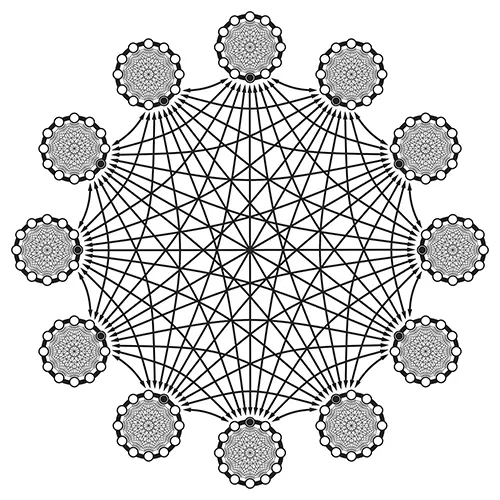
Cosmic Network
Alan takes us from the very small to the very large, explaining the interrelatedness of all things in the universe as a vast network which weaves us into a united yet unnamable divinity.
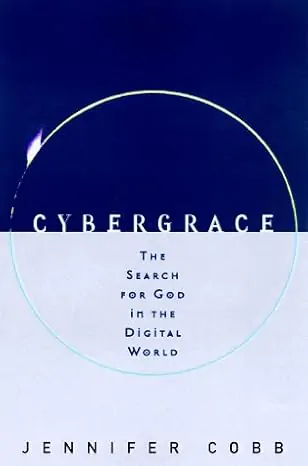
CyberGrace
Jennifer Cobb bridges the gap between spirituality and technology, arguing that digital systems can inspire divine emergence. Drawing on ideas from Teilhard de Chardin, she suggests that as computers and AI evolve, simple processes combine into intricate, awe-inspiring patterns that hint at a higher purpose. In an era of rapid scientific and digital advances, her theory invites us to see machines not as cold tools but as potential gateways to a deeper, more meaningful spirituality.
Ecological Awareness
When Alan Watts talked about the ‘mystical experience’ among scientific circles, he preferred to call it ‘ecological awareness’—referring to a state of mind in which a person ceases to feel separate from the environment in which he or she exists.
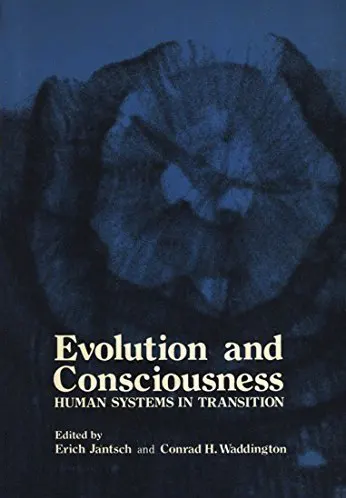
Evolution and Consciousness
Evolution and Consciousness is one of the first, still rare, truly transdisciplinary books: it deals with a totality, not a sector of it. Therefore, it defies any disciplinary labeling. It is a scientific book, yet also deals with topics until now reserved for books of mysticism and poetry. It bridges the gap between science and other forms of knowledge. It deals not just with scientific questions, but with existential questions which concern all mankind, such as the meaning of life and the evolutionary significance of human design and action. It challenges the whole dominant Western world view: process thinking instead of structural thinking, dynamic instead of static, evolution instead of permanency.
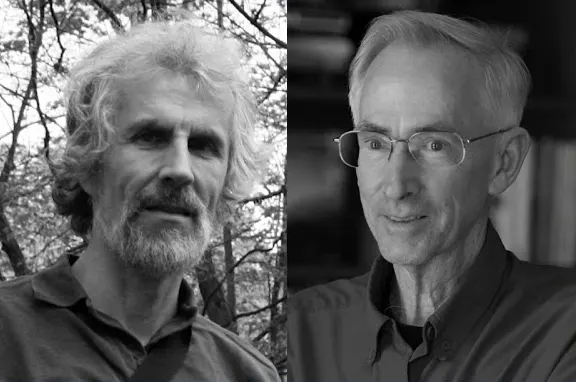
Glimpsing the Global Brain
Complex systems theorist Heylighen and evolutionary biologist Wilson discuss a possible phase transition of humanity in which the members of our species become neurons in a planetary brain, utilizing the Internet as a shared exocortex.
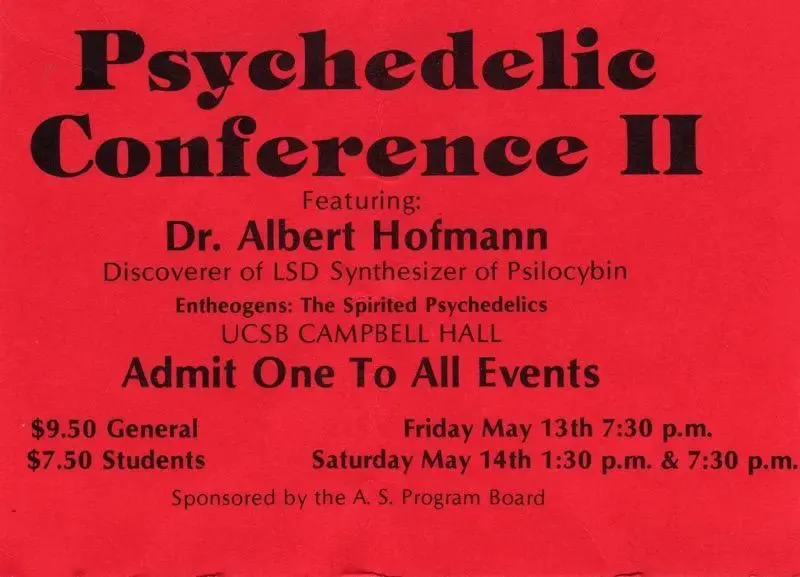
Hallucinogens: Before and After Psychology
What mushrooms uncover is the slumbering Lógos, the primordial inner voice, psychedelics' telepathic tidings heralding our exile's end. Visionary technologies shall synergize humanity's dreams, fusing inner and outer worlds, truth and imagination reconciled. To break ancestral chains, we must meet the paradoxical with minds ablaze, escaping platitudes’ prisons through ecstasy’s portals, whereby we’re transfigured, phoenix-like, rising renewed from the ashes of history—life’s fiery genius unbound.
In the Valley of Novelty
Journeying through multiple dimensions of psychedelic consciousness, Terence McKenna's visionary weekend workshop invites us on an entheogenic voyage to the frontiers of the mind and its imminent conquering of matter. Blending scientific insights with shamanic wisdom, McKenna argues that natural plant medicines like psilocybin and DMT provide portals into mystical realms and alien dimensions, catalyzing revelations about nature, reality, and the human psyche. He urges us to courageously explore these consciousness-expanding substances, seeking the gratuitous beauty and truths they unveil. For McKenna, the psychedelic experience holds secrets to our world and ourselves—if only we dare lift the veil.
Lógos Meets Eros
Terence McKenna glimpses both peril and promise as civilization hurtles toward an uncertain future. Technology untethers tradition, psychedelics unleash inspiration from narrow cultural confines, boundaries dissolve, categories collide, contradictions mount. What strange attractor lures us through this unfolding existential adventure? In McKenna’s view, dystopia or utopia will emerge based on one driving factor—our collective capacity for creativity, courage, and compassion as we navigate the quantum unknown. With open minds and loving hearts, a brighter tomorrow awaits.
Malcolm’s 100× Vision
Malcolm Ocean paints a picture of a future where human collaboration reaches new heights, imagining a world in the 2030s where small groups of people achieve profound synchronicity, forming “collective brains” capable of solving complex problems. These groups are part of larger networks that tackle global issues, create innovative products, and foster personal growth. Ocean envisions a society where work is deeply fulfilling, financial security is guaranteed, and human potential is maximized through trust, emotional coherence, and shared consciousness. It’s a hopeful glimpse into a world of enhanced human connection and capability.
Man Thinks God Knows, God Knows Man Thinks
What if language could be seen instead of heard? McKenna fancies a linguistic lark where lexicon becomes a dance of light. Words incarnate as rainbow octopi, their very skin shimmering significance. In the verbosity vortex we spin, until, lo, meaning and matter tango into one, with word becoming flesh and flesh becoming word in the ultimate semantic samba.
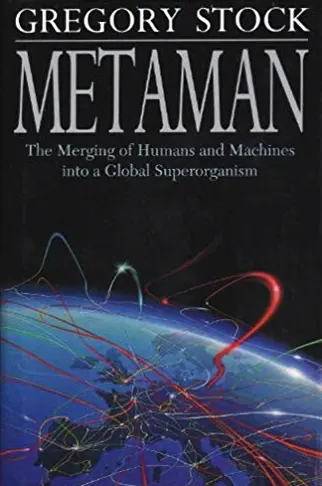
Metaman
In this visionary book, Gregory Stock gives us a new way of understanding our world and our future. He develops the provocative thesis that human society has become an immense living being: a global superorganism in which we humans, knitted together by our modern technology and communication, are like the cells in an animal's body. Drawing on impressive research, Stock shows this newly formed superorganism to be more than metaphor: it is an actual living creature, which he has named Metaman, meaning beyond and transcending humans.
Mind Outside Brain
We approach the problem of the extended mind from a radically non-dualist perspective. The separation between mind and matter is an artefact of the outdated mechanistic worldview, which leaves no room for mental phenomena such as agency, intentionality, or feeling. We propose to replace it by an action ontology, which conceives mind and matter as aspects of the same network of processes. By adopting the intentional stance, we interpret the catalysts of elementary reactions as agents exhibiting desires, intentions, and sensations. Autopoietic networks of reactions constitute more complex super-agents, which moreover exhibit memory, deliberation and sense-making. In the specific case of social networks, individual agents coordinate their actions via the propagation of challenges. The distributed cognition that emerges from this interaction cannot be situated in any individual brain. This non-dualist, holistic view extends and operationalises process metaphysics and Eastern philosophies. It is supported by both mindfulness experiences and mathematical models of action, self-organisation, and cognition.
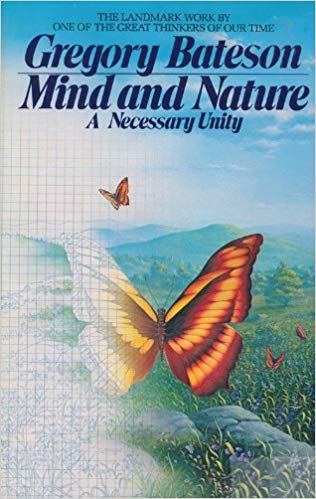
Mind and Nature
Renowned for his contributions to anthropology, biology, and the social sciences, Bateson asserts that man must think as Nature does to live in harmony on the earth and, citing examples from the natural world, he maintains that biological evolution is a mental process.
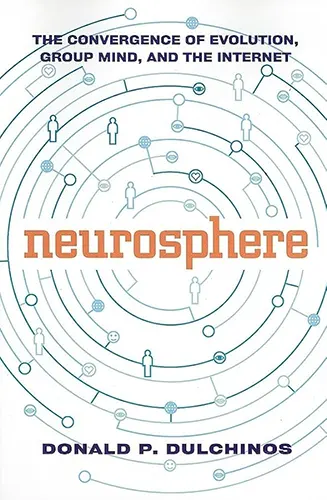
Neurosphere
According to Donald Dulchinos, the real action on the Internet isn’t in the realm of commerce. It is, plain and simple, in the realm of religion. But not exactly that old-time religion. This book is about the spiritual impact of our increasing ability to communicate quickly and with enhanced evolution. It's about our search for meaning, our hunger for a glimpse at humanity's future development in which, frighteningly or excitingly, the trend is clearly toward increasing integration of telecommunications and information technology with the body itself. Electronic prosthetics, direct neural implants, and the brain's control of electronic and mechanical limbs move the boundary that used to exist between human and machine to some undefined frontier inside our bodies, our brains, and, perhaps, our minds.
Noospheric Consciousness
The world-wide web has been conceptualized as a global brain for humanity due to its neural network-like organization. To determine whether this global brain could exhibit features associated with consciousness, we review three neuroscientific theories of consciousness: information integration, adaptive resonance and global workspace. These theories propose that conscious states are characterized by a globally circulating, resonant pattern of activity that is sufficiently coherent to be examined and reflected upon. We then propose a correspondence between this notion and Teilhard de Chardin’s concept of the noosphere as a forum for collective thinking, and explore some implications of this self-organizing dynamics for the evolution of shared, global understanding.
Path of the Heart
Ram Dass explores love as both a spiritual path and a trap—how relationships, methods, and even grief can awaken the boundless love within, yet often become addictive. The work is to rest in love itself, free from clinging, keeping the heart open to all beings without exception.
Permitting Smart People to Hope
McKenna traipses through a mélange of scientific and technological folderol—the detection of the top quark, swift progress on sequencing the human genome, newfangled theories about the origin of the moon, quantum bafflements like non-locality, the proliferation of the internet and information technology, speculations on the nature of time from Prigogine, and sundry other bamboozlements. He elucidates how these breakthroughs in diverse fields might converge to profoundly transform human civilization, culture, and consciousness in the imminent future.
Power of Space
Weaving connections between Eastern thought and modern science, Alan Watts explores the wonder of space. For him, space is no mere emptiness but a cosmic tapestry integral to existence. He draws parallels between space and the Buddhist void, seeing both as the interwoven ground of being that allows consciousness to emerge.
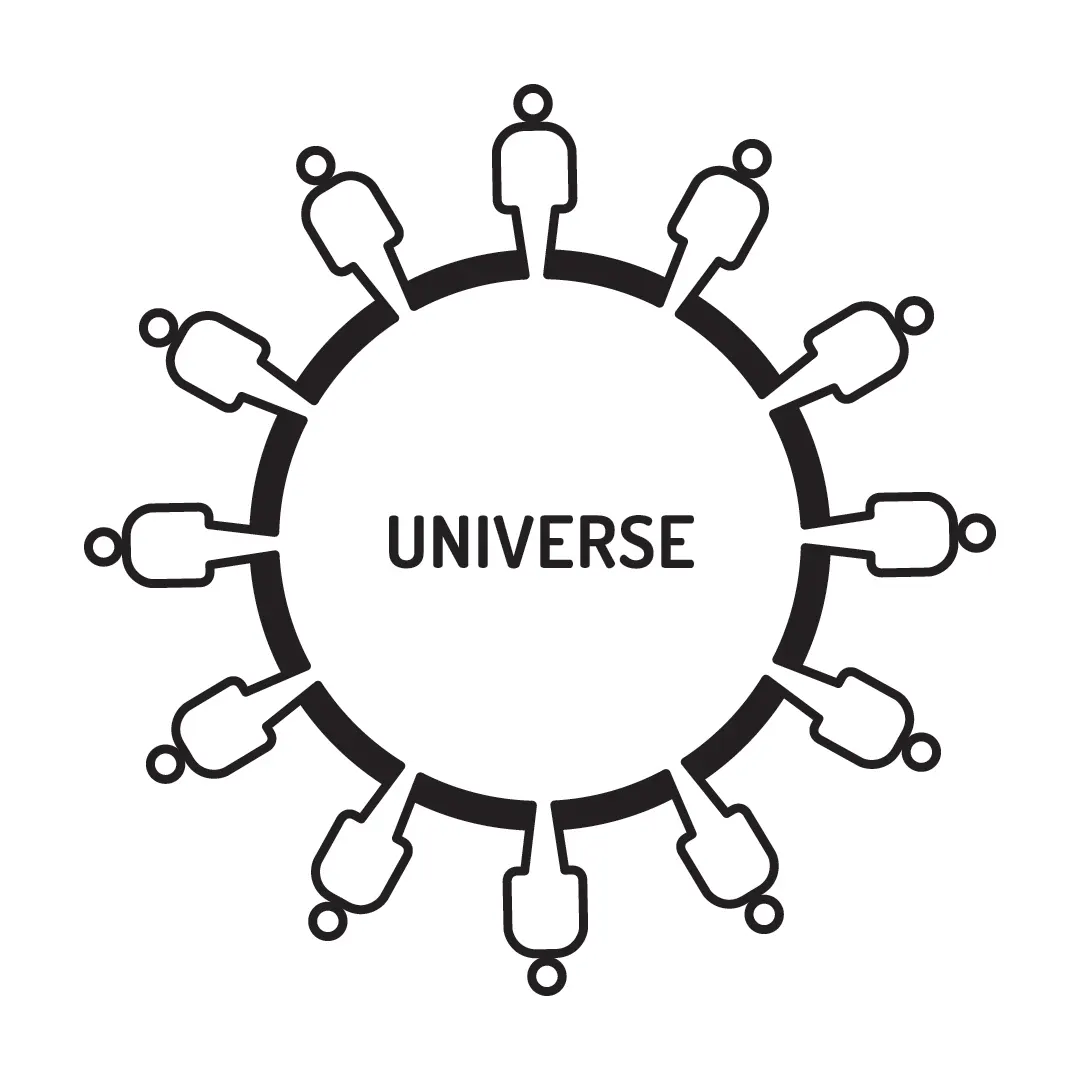
Reality, Art, and Illusion
Join Alan as he expresses the meaning of life through the Hindu-Buddhist idea of reality as a divine game of hide-and-seek. "Life is not ultimately serious," Watts argues. By embracing the fluidity of identity and recognizing our interconnectedness, we can creatively engage with existence as impermanent, unified, and filled with playful potential. Accessible yet philosophically rich, these decades-old lectures offer timeless insights on the nature of reality.
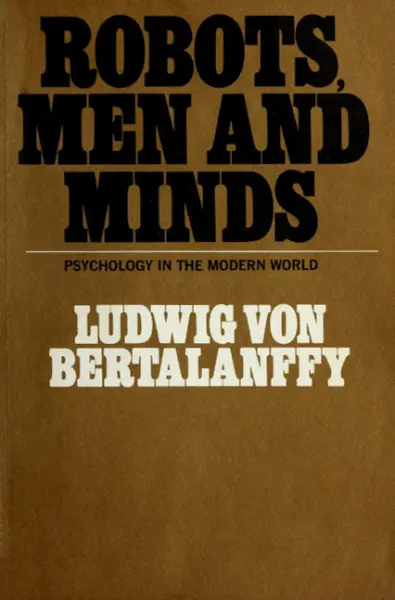
Robots, Men, and Minds
Based on lectures delivered as The Inaugural Lectures in The Heinz Werner Lecture Series at Clark University (Worcester, Mass.) in January 1966, the book introduces new conceptions of humans and their world. After discussing the advantages and drawbacks of humanity's propensity for the symbolic construction of reality, it focuses on the systems approach to an understanding of the species. The author warns against the common error of identifying cybernetics with general systems theory. No matter how complex the cybernetic system, it "can always be resolved into feedback circuits" and thought of in terms of "linear causality." The regulative behavior of general systems is determined by goal-directed, dynamic interaction between many forces and variables in an open system. Bertalanffy points out that "no comprehensive theory of systems exists today." As a model, however, the approach has many advantages, such as obviating the need for the "ghost in the machine" and suggesting some solutions to the mind-body problem.
Shamanism, Alchemy, and the Millennium
A whimsical reflection on humanity's journey toward ever-greater connectedness, from the cosmic singularity to the noosphere's fanciful manifestations. Could the shamanic alchemist's mythic intuition, the goddess's wisdom, and capitalism's impatient urge together guide us to the stars and back to Eden? An optimistic revelry.
Simulation, Consciousness, Existence
Like organisms evolved in gentle tide pools, who migrate to freezing oceans or steaming jungles by developing metabolisms, mechanisms, and behaviors workable in those harsher and vaster environments, our descendants, able to change their representations at will, may develop means to venture far from the comfortable realms we consider reality into arbitrarily strange worlds. Their techniques will be as meaningless to us as bicycles are to fish, but perhaps we can stretch our common-sense-hobbled imaginations enough to peer a short distance into this odd territory.
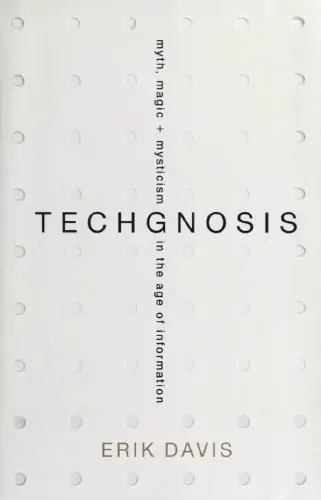
TechGnosis
How does our fascination with technology intersect with the religious imagination? While the realms of the digital and the spiritual may seem worlds apart, esoteric and religious impulses have in fact always permeated (and sometimes inspired) technological communication. Erik Davis uncovers startling connections between such seemingly disparate topics as electricity and alchemy; online role-playing games and religious and occult practices; virtual reality and gnostic mythology; programming languages and Kabbalah. The final chapters address the apocalyptic dreams that haunt technology, providing vital historical context as well as new ways to think about a future defined by the mutant intermingling of mind and machine, nightmare and fantasy.
Technium Unbound
What comes after the Internet? What is bigger than the web? What will produce more wealth than all the startups to date? The answer is a planetary superorganism comprised of 4 billion mobile phones, 80 quintillion transistor chips, a million miles of fiber optic cables, and 6 billion human minds all wired together. The whole thing acts like a single organism, with its own behavior and character—but at a scale we have little experience with. This is more than just a metaphor. Kevin Kelly takes the idea of a global superorganism seriously by describing what we know about it so far, how it is growing, where its boundaries are, and what it will mean for us as individuals and collectively.
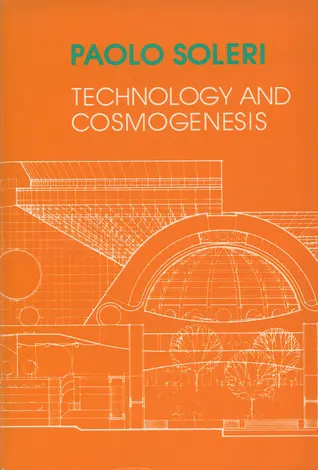
Technology and Cosmogenesis
A hopeful antidote to the destruction of man's environment caused by technology divorced from spirituality. Paolo Soleri, the renowned architect, urban planner, process philosopher and alchemist of the new spirituality of science and technology, challenges us to let go of our absolutized views of human life and creation. By this release, he holds that we can be healed by a cosmos in the process of becoming divine.
Teilhard de Chardin in the Age of Ecology
Jane Blewett interviews Thomas Berry about Pierre Teilhard de Chardin's philosophy.
The Biosphere and the Noösphere
A general intellectual outlook of one of the most remarkable scientific leaders of the early twentieth century, focusing on a predicted historical and planetary phase transition in which humanity becomes a united force.
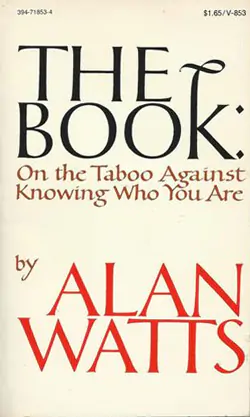
The Book
At the root of human conflict is our fundamental misunderstanding of who we are. The illusion that we are isolated beings, unconnected to the rest of the universe, has led us to view the “outside” world with hostility, and has fueled our misuse of technology and our violent and hostile subjugation of the natural world. In The Book, philosopher Alan Watts provides us with a much-needed answer to the problem of personal identity, distilling and adapting the ancient Hindu philosophy of Vedanta to help us understand that the self is in fact the root and ground of the universe. In this mind-opening and revelatory work, Watts has crafted a primer on what it means to be human—and a manual of initiation into the central mystery of existence.
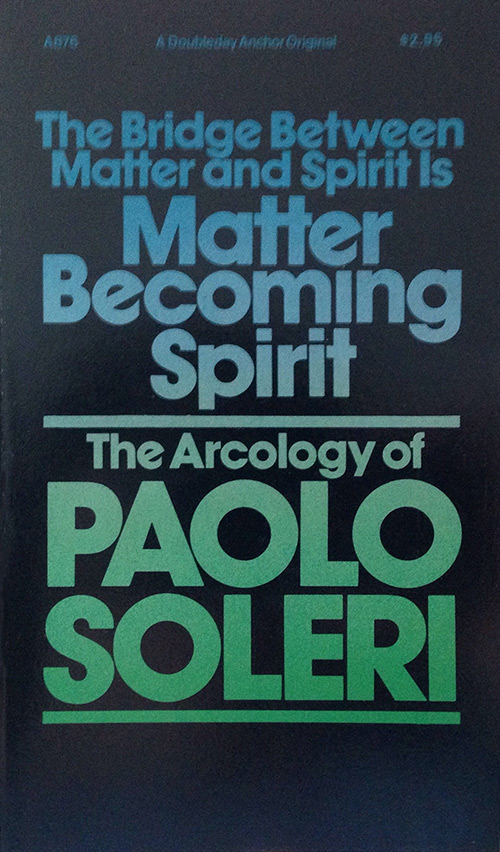
The Bridge Between Matter And Spirit is Matter Becoming Spirit
This volume brings together the essays of Paolo Soleri in which he sets forth his philosophy of arcology (architecture ecology) and pleads for a new stage in the evolution of human society—a move toward compactness, or miniaturization, of our cities. To do so we must build solids rather than veneers; we must flee from a “flat” cityscape that debilitates and suppresses the individual. Arcologies, three dimensional macrostructures, are for populations of thousands or of millions.
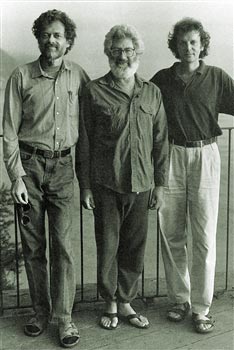
The Future of Humanity
McKenna, Abraham, and biologist Rupert Sheldrake contemplate humanity's bumpy ride towards transcendence. McKenna unveils his theory of an impending "eschaton" when history will culminate in a boundary-erasing recovery of unity, fulfilling religious anticipation. However, approaching this "zero point" will be increasingly chaotic. Abraham and Sheldrake greet McKenna's vision with skepticism tinged with hope. Probing global crises, the trio spiritedly grapple with miraculous visions for transforming society, from psychedelic revival to empowering women. Their speculative voyage reveals turbulence ahead, yet yields glimmers of our journey's destination.
The Global Brain as a Model of the Future Information Society
The Global Brain paradigm views the emerging global information network connecting humans and technology as a nervous system for Earth's social superorganism. This special issue surveys opportunities and challenges in developing this potentially more intelligent, synergetic system. Contributions explore political, economic, and philosophical aspects, aiming to guide the transition towards a sustainable society empowering diversity.
The Global Brain as a New Utopia
The global brain can be conceived most fundamentally as a higher level of evolution, the way humans form a higher level of organization that evolved out of the animals. Although the analogy between an organism and a society can be applied even to primitive societies, it becomes clearly more applicable as technology develops. As transport and communication become more efficient, different parts of global society become more interdependent. At the same time, the variety of ideas, specializations, and subcultures increases. This simultaneous integration and differentiation creates an increasingly coherent system, functioning at a much higher level of complexity.
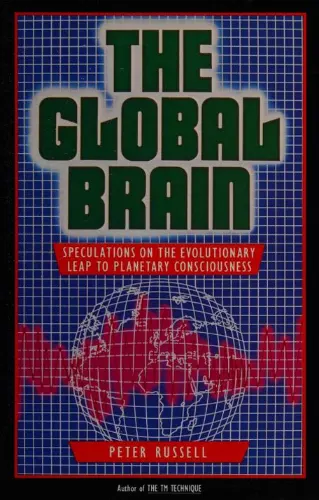
The Global Brain
We've seen the power of the internet to connect people around the world in ways never before known. This remarkable book argues that the billions of messages and pieces of information flying back and forth are linking the minds of humanity together into a single, global brain: a brain with astonishing potential for the Earth. Peter Russell weaves together modern technology and ancient mysticism to present a startling vision of the world to come, where humanity is a fully conscious superorganism in an awakening universe. The human potential movement, he shows, is growing fast and influencing business, politics, and medicine.
The Global Superorganism
The organismic view of society is updated by incorporating concepts from cybernetics, evolutionary theory, and complex adaptive systems. Global society can be seen as an autopoietic network of self-producing components, and therefore as a living system or “superorganism”.
The Omega Point as Eschaton
Frank Tipler presents an outline of the Omega Point theory, which is a model for an omnipresent, omniscient, omnipotent, evolving, personal God who is both transcendent to spacetime and immanent in it, and who exists necessarily. The model is a falsifiable physical theory, deriving its key concepts not from any religious tradition but from modern physical cosmology and computer science; from scientific materialism rather than revelation. Four testable predictions of the model are given. The theory assumes that thinking is a purely physical process of the brain, and that personality dies with the brain. Nevertheless, he shows that the Omega Point theory suggests a future universal resurrection of the dead very similar to the one predicted in the Judeo-Christian-Islamic tradition. The notions of “grace” and the “beatific vision” appear naturally in the model.
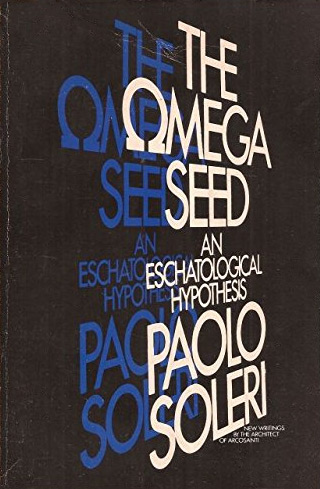
The Omega Seed
The Ωmega Seed brings together Paolo Soleri’s writings on eschatology, that branch of theology concerned with the final events in the history of the world or of mankind. Soleri believes that the simulation of the divine will provide man with a blueprint for creation not only of our physical environment but also of a new stage in the evolution of mankind. His work is against the things of a materialistic society, toward a redesigning of the urban civilization of Earth.
The Plot Thickens, the Stakes Rise
McKenna discussed his theory that humanity is accelerating towards a transcendental object at the end of time, propelled by ever-increasing novelty. He argued that the internet and new technologies like virtual reality are expanding consciousness in this trajectory. McKenna was especially excited about the legal psychedelic salvia divinorum, urging people to explore it and other plants as allies toward reaching higher states of awareness before the culmination of cosmic evolution.
The Psychedelic Experience
Alan says psychedelics like LSD and psilocybin can provide religious insight, but should be used with spiritual discipline to integrate the mystical experience into everyday life. He critiques psychiatry’s lack of metaphysical grounding and calls for medical and religious professionals to work together on psychedelics. Watts emphasizes psychedelics’ potential as a bridge between mystical and ordinary consciousness, while warning against spiritual inflation or romanticizing substances. Overall he presents a balanced perspective, exploring psychedelics as tools for self-knowledge that require wisdom in application.
The Psychedelic Explosion
Alan talks about the upcoming revolution in which Western society will have to come to grips with the existence of the psychedelic/mystical experience, and how to integrate it into our culture in a productive, fulfilling, and responsible manner. Included are personal recollections of DMT and LSD trips experienced by Watts himself, why the utilization of psychedelic drugs should be seen as a tool, his vision of a psychedelic campus for guided mystical experiences, and why prohibition is doomed to failure.
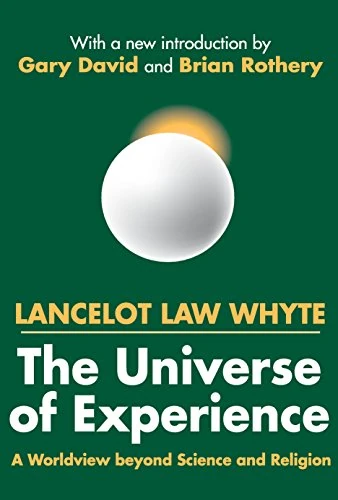
The Universe of Experience
Modern experience forces philosophy and social thought to confront the basic problems of value. Is this life worth caring about? How can we find a way between the deceit of fanatical belief and despair? In the view of Lancelot Law Whyte, the essential challenge to mankind today is an underlying nihilism promoting violence and frustrating sane policies on major social issues. Avoiding the seductive trap of utopianism, Whyte approaches this challenge by defining the terms of a potentially worldwide consensus of heart, mind, and will.
The Vision of a Better World
Two visionaries, Tom Munnecke and Barbara Marx Hubbard, engage in an uplifting dialogue exploring the emergence of human creativity and consciousness. They trace inspirations from mentors like Jonas Salk, who recognized futuristic possibilities in Hubbard, and Buckminster Fuller, who affirmed humanity's potential. Together they shine light on the crisis of our times as the birth pangs of a new civilization, calling us to connect with the creativity arising globally. Their exchange weaves threads of hope and positivity, envisioning a future where all people actualize their gifts in service of our world.
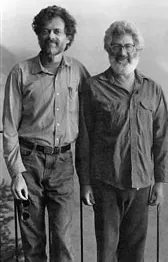
The World Wide Web and the Millennium
Seldom do we have an opportunity to test the accuracy of oracular predictions, but this fascinating conversation between two great thinkers has already proven to be right on target. Speculations include the future evolutionary development of the Internet, whether it is an embryonic intelligence, whether it will merge our minds into a planetary consciousness, or whether it is an alien brain waiting for humanity to cross an evolutionary threshold. Let the bard and the chaos theorist weave an exquisite cybernetic fantasy for you in this evening seminar.
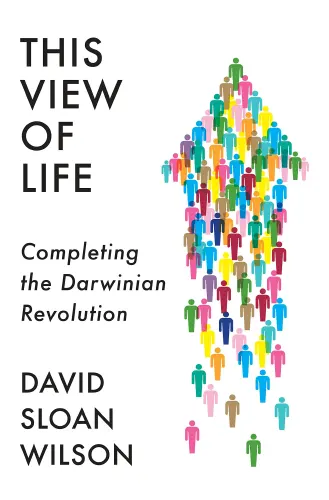
This View of Life
It is widely understood that Charles Darwin’s theory of evolution completely revolutionized the study of biology. Yet, according to David Sloan Wilson, the Darwinian revolution won’t be truly complete until it is applied more broadly—to everything associated with the words “human,” “culture,” and “policy.” In a series of engaging and insightful examples—from the breeding of hens to the timing of cataract surgeries to the organization of an automobile plant—Wilson shows how an evolutionary worldview provides a practical tool kit for understanding not only genetic evolution but also the fast-paced changes that are having an impact on our world and ourselves. What emerges is an incredibly empowering argument: If we can become wise managers of evolutionary processes, we can solve the problems of our age at all scales—from the efficacy of our groups to our well-being as individuals to our stewardship of the planet Earth.
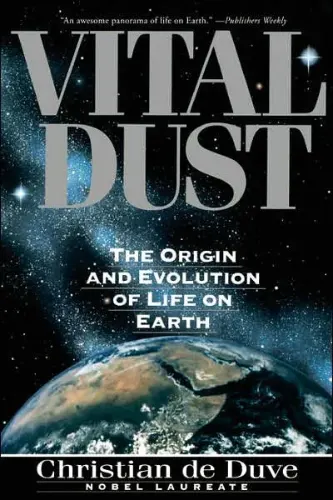
Vital Dust
Is the emergence of life on Earth the result of a single chance event or combination of lucky accidents, or is it the outcome of biochemical forces woven into the fabric of the universe? And if inevitable, what are these forces, and how do they account not only for the origin of life but also for its evolution toward increasing complexity? Vital Dust is a groundbreaking history of life on Earth, a history that only someone of Chrisitian de Duve's stature and erudition could have written.
What is the Noosphere?
Picture Earth evolving a new layer—not of rock or life, but of thought and technology. This “noosphere” is like a planetary brain emerging through our global networks, satellites, and collective intelligence. The paper explores how this mysterious transformation could represent Earth’s next evolutionary leap, potentially leading to planetary consciousness or even contact with other cosmic minds. It’s happening right now, though we’re still figuring out how to guide this planetary metamorphosis.
World Wide Brain
Ben Goertzel says the Internet is evolving towards a “global Web mind”–an emergent, distributed intelligence surpassing human capabilities. This development, grounded in complexity science, could solve AI’s scalability issues and merge humanity with technology. While potentially solving global problems, it raises concerns about individual freedom. Drawing parallels with spiritual concepts like the noösphere and collective unconscious, this evolution is seen as inevitable and transformative. As we nurture this new form of life, we stand at the threshold of a profound shift in human consciousness and global interconnectedness.
World as Consciousness
Alan Watts guides us through Mahayana Buddhism to reveal that the world is not something we passively witness, but something we actively create—moment by moment. Wake up: reality is now, consciousness is all, and you are the dance itself.